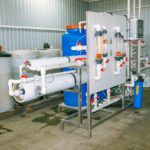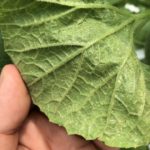Rust diseases – causes, symptoms, and treatment
Rust diseases are common plant fungal diseases, belonging to the order Pucciniales. They have a significant economic impact in several key crops. It is estimated that the disease causes global losses of around $1B of wheat and $3B of coffee.
In addition to leaf rust, the other plant rusts are stem and stripe rusts. Rust disease is caused by different types of pathogenic fungi. For example, Hemilleia vastatrix causes coffee leaf rust, Puccinia triticina is responsible for wheat leaf rust, Puccinia striiformis causes wheat stripe rust and Phragmipedium spp, causes common rust.
In the past, rusts were a threat to farming, but with the rapid advancements in plant science, the diseases can be better controlled.
 Photo by: Dr Parthasarathy Seethapathy, Tamil Nadu Agricultural University, Bugwood.org
Photo by: Dr Parthasarathy Seethapathy, Tamil Nadu Agricultural University, Bugwood.org
Symptoms and damage of the rust disease
Diagnosing the disease is relatively easy. Symptoms include oval or ring-shaped orange, yellow or reddish pustules on the leaves. The color of the spots resembles the typical color of iron rust, hence the name “rust”.
As the disease infects the plant leaves, it interferes with its photosynthetic capability, weakens the plant, and eventually causes low productivity.
How does the infection occur?
Most pathogenic fungi cannot survive from one period to the next and thus require a living host plant. In fact, some of the pathogens that cause leaf rust disease have two hosts: the primary host and an alternate host. The host plant is usually the plant crop, while the alternate host is a native herb plant.
Under humid conditions, pathogenic fungi produce infective spores known as the uredospores. Since uredospores are light, they can be spread by the wind from one region to the next, causing massive infection.
Favorable conditions for the development of leaf rust disease
Leaf rust is likely to develop when the atmospheric temperature ranges from 15⁰ – 25⁰C. Additionally, moisture is essential for the growth of the uredospores, which is why infection occurs during the rainy period.
Adaptations of pathogenic fungi for survival
Parasitic fungi responsible for rust development in corn, coffee, wheat have the following characteristics:
- They produce multiple infective uredospores, which are spread by either wind or rain.
- Infection occurs within a short period (approximately 6 – 8 hours)
- The fungi produce new infectious spores within 7- 10 days
Prevention
Infection with rust is difficult to prevent. However, some preventative measures can be taken in order to minimize damage. Preventive measures you can take include:
- Plant unsusceptible crop varieties.
- Restrict movements in and out of susceptible crop plantations
- Farm weeding – most food crops are affected by weeds. Some weeds are alternate hosts of rust. Weeding eliminates competition with the crop, as well as the possible hosts.
- Pruning – in crops such as coffee, pruning help enhance air circulation, preventing moisture accumulation on the leaves.
Treatment
Despite putting in place disease preventive measures, rust will constantly develop if conditions are favorable. In that regard, the best way to treat leaf rust disease in your farm is by proper and timely spraying of fungicides.
Examples of fungicides used against rust diseases are given in the table below.
| Active ingredient | Mobility | Mode of action | Common fungicides |
| Azoxystrobin | Systemic | Inhibits mitochondrial respiration | Ortiva top (Syngenta)
Azimut (Adama) |
| Mancozeb
|
Non-systemic | Multi-site activity | Manzidan, Dithane M45 (Adama, Corteva)
|
| Cyproconazole
|
Systemic | Inhibits the synthesis of sterol in cell walls | Alto SL (Syngenta)
Atemi extra (Adama)
|
| Fenbuconazole | Systemic | Inhibits the synthesis of sterol in cell walls | Indar (Corteva) |







